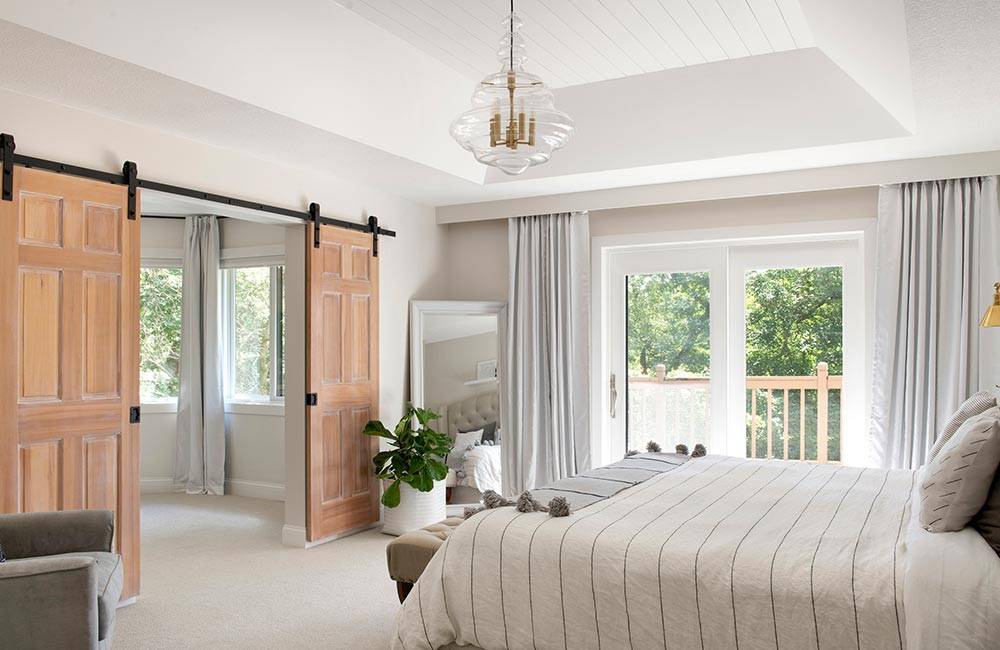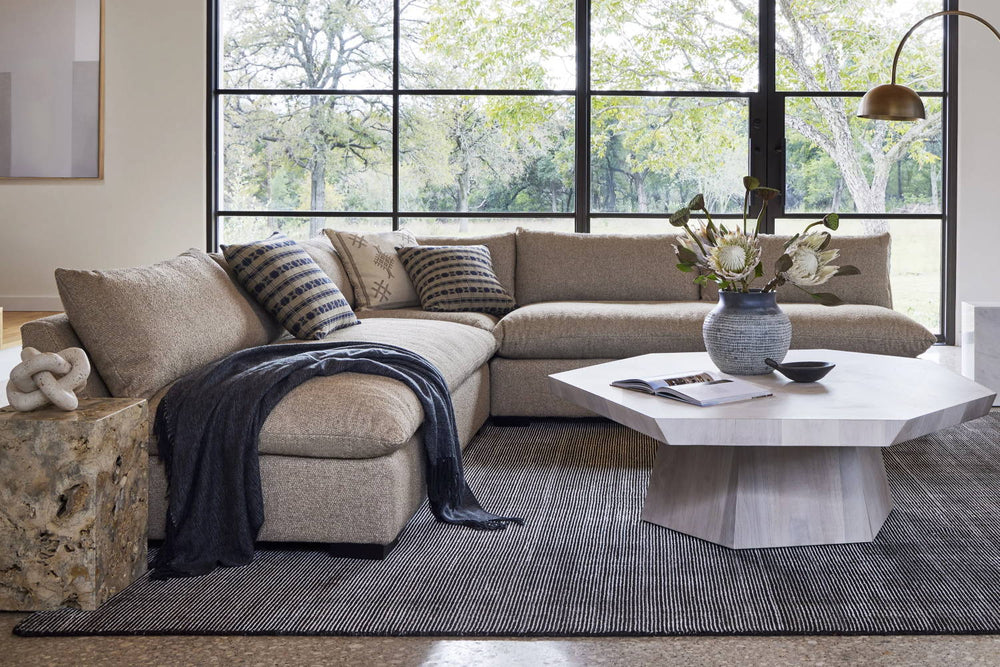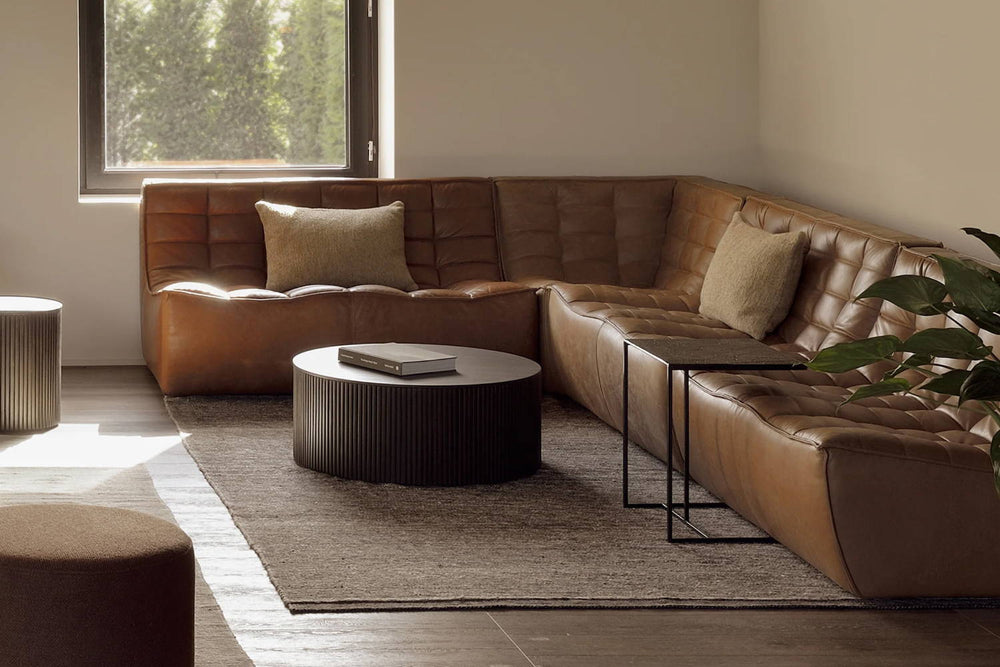Lucy Round Dining Table by Four Hands
Furnishing a small dining space demands strategic choices, and selecting the optimal table shape is paramount. In this concise guide, we explore the diverse world of dining tables, focusing on what shape works best for compact living areas. Whether it's the space-saving charm of a round table, the versatility of a square design, the linear efficiency of a rectangular piece, or the unique appeal of an oval table, each shape comes with distinct advantages. Here, we’ll navigate through the considerations that will help you make an informed decision and transform your limited dining space into a stylish and functional setting.
Mikado Round Dining Table by Ethnicraft
Round & Oval Dining Tables
Round and oval dining tables offer several advantages, especially in small spaces:
- Space Efficiency: Their lack of corners makes them space-efficient, allowing for easier movement in tight areas without the risk of bumping into edges
- Versatility: Round and oval tables are versatile, fitting well into both small dining rooms and open-plan spaces. They adapt easily to various room layouts
- Social Interaction: The absence of corners encourages a more inclusive and social dining experience. Everyone at the table is within sight and conversation is facilitated
- Aesthetics: Their symmetrical shapes often lend a pleasing aesthetic to the room. They can be visually appealing and create a balanced look in the space
- Flexibility in Seating: These tables accommodate varying numbers of diners comfortably. You can add or remove chairs without disrupting the overall harmony
- Safety: With no sharp corners, round and oval tables are safer, particularly in homes with children. There's less risk of accidental collisions with sharp edges
Cons of Round and Oval Dining Tables:
- Limited Tabletop Space: The lack of corners can result in less tabletop space compared to rectangular tables, potentially limiting the placement of dishes and decor
- Challenging Placement: It might be challenging to place a round or oval table against a wall, which could limit overall room arrangement options
- Less Formal Look: Some may perceive round and oval tables as less formal compared to rectangular ones, which might not suit certain decor preferences
- Size Considerations: The size of the table can impact how well it fits into a space, and finding the right size may require careful consideration
While round and oval dining tables offer numerous advantages, they also come with considerations related to tabletop space, placement, perceived formality, and size. The choice ultimately depends on individual preferences, room size, and the desired dining experience.
Corto Dining Table by Ethnicraft
Rectangle & Square Dining Tables
Rectangle and square dining tables can be excellent choices for small spaces due to several reasons:
- Space Efficiency: In small dining areas, maximizing available space is crucial. The straight edges of rectangle and square tables can fit neatly against walls or in corners, making efficient use of limited space
- Versatility in Placement: These tables are versatile in terms of placement. They can be pushed against a wall or positioned in a corner, allowing for flexibility in room arrangement. This versatility is particularly valuable in smaller rooms where space utilization is key
- Linear Design: The linear design of rectangle and square tables provides a clean and organized look. This can contribute to a sense of order and simplicity, which is beneficial in smaller spaces to avoid visual clutter
- Defined Seating Arrangement: The straight edges make it easy to align modern dining chairs, creating a defined seating arrangement. This can help in optimizing space and preventing overcrowding
- Accommodating Different Room Shapes: Rectangle and square tables come in various sizes, allowing you to choose one that fits the specific dimensions of your small dining area, whether it's a narrow space or a square room
- Adaptable to Various Styles: These tables are versatile in terms of style, making them suitable for a range of design preferences. Whether you prefer a modern, traditional, or eclectic look, you can find rectangle and square tables to complement your small space
Cons of Square and Rectangular Dining Tables:
- Less Social Interaction: The straight edges may create a less inclusive dining experience compared to round or oval tables, as people sitting at the corners might be farther apart
- Space Occupancy: In smaller rooms, the linear design might occupy more floor space compared to round tables, potentially making the room feel cramped
- Sharp Corners: The sharp corners can be a safety concern, especially in homes with children. Considerations for childproofing may be necessary.
- Limited Flexibility: The linear shape may lack the flexibility in seating arrangements compared to round tables, where chairs can be positioned more freely
Square and rectangular dining tables offer generous space, a formal look, ease of placement, and versatility in room size. However, considerations include potential limitations in social interaction, space occupancy, sharp corners, and flexibility in seating arrangements. The choice depends on individual preferences, room size, and the desired aesthetic and functionality of the dining space
Bridge Extendable Dining Table by Case Furniture
Convertible & Extendable Dining Tables
Convertible and extendable dining tables are particularly beneficial for small spaces due to several reasons:
Space Optimization: These tables can be adjusted in size, allowing you to optimize space based on your needs. You can keep them compact for everyday use and extend them when hosting guests, maximizing functionality in limited space
Versatility: The ability to convert or extend the table makes it versatile for various purposes. It can serve as a compact dining table for everyday meals and transform into a larger surface for special occasions or entertaining
Adaptability: Convertible and extendable tables adapt to changing circumstances. Whether you need extra space for a dinner party or want to create a more intimate setting for a small family meal, these tables offer flexibility
Multi-Functional Design: Many convertible and extendable tables are designed with a multi-functional approach. Some can be used as both a dining table and a desk, making them suitable for small apartments or multipurpose rooms
Efficient Use of Space: Convertible and extendable tables contribute to efficient space utilization, allowing you to have a dining table that meets your needs without taking up unnecessary space when not in use
The adaptability, versatility, storage solutions, multi-functional design, aesthetics, and efficient use of space make convertible and extendable dining tables excellent choices for small living spaces. They offer practical solutions for those who seek flexibility and functionality without compromising on style.
CH337 Dining Table by Carl Hansen & Son
Choosing the Right Material & Styling
Choosing the right material and styling for your dining table involves considering both functional and aesthetic aspects. Here are some factors to help guide your decision:
Material:
Wood: Classic and durable, wood offers a warm and inviting look. Different wood types (oak, walnut, mahogany) provide varied aesthetics. Consider the finish for maintenance and style
Glass: Modern and airy, glass tables can visually expand a small space. Choose tempered glass for safety. Consider a metal or wood base for added stability
Metal: Sleek and contemporary, metal tables are durable and easy to clean. Options like stainless steel or brushed nickel can add an industrial or modern touch
Marble/Stone: Luxurious and elegant, marble or stone tables add a touch of sophistication. They may require more maintenance but can be stunning focal points
Style:
Traditional: Ornate details, rich wood tones, and classic shapes characterize traditional dining tables. This style often works well in formal dining spaces
Contemporary: Clean lines, minimalistic designs, and innovative materials define modern dining tables. They are suitable for sleek, uncluttered spaces
Rustic/Farmhouse: Natural textures, distressed finishes, and sturdy constructions are characteristic of rustic tables. They create a cozy, inviting atmosphere.
Industrial: Metal accents, reclaimed wood, and a utilitarian aesthetic define industrial-style tables. This style often suits urban or loft-inspired spaces
Mid-Century Modern: Retro-inspired designs, tapered legs, and functional simplicity are hallmarks of mid-century modern tables. They add a vintage flair to the space
Torsion Dining Table by Ethnicraft
Ultimately, the choice of a dining table shape significantly impacts the functionality and aesthetics of a small space. Whether you opt for the space-efficient round table, the versatile square design, the linear efficiency of a rectangular piece, or the unique appeal of an oval table, your decision should align with both practicality and style. By considering the dimensions of your space, the number of occupants, and your personal preferences, you can transform a small dining area into a stylish, comfortable, and efficient hub. Embrace the diversity of dining table shapes, and let your choice enhance not just the functionality of the space but also its visual appeal. With the right dining table shape, you can transform even the smallest areas into inviting and well-utilized settings for shared meals and memorable gatherings.








